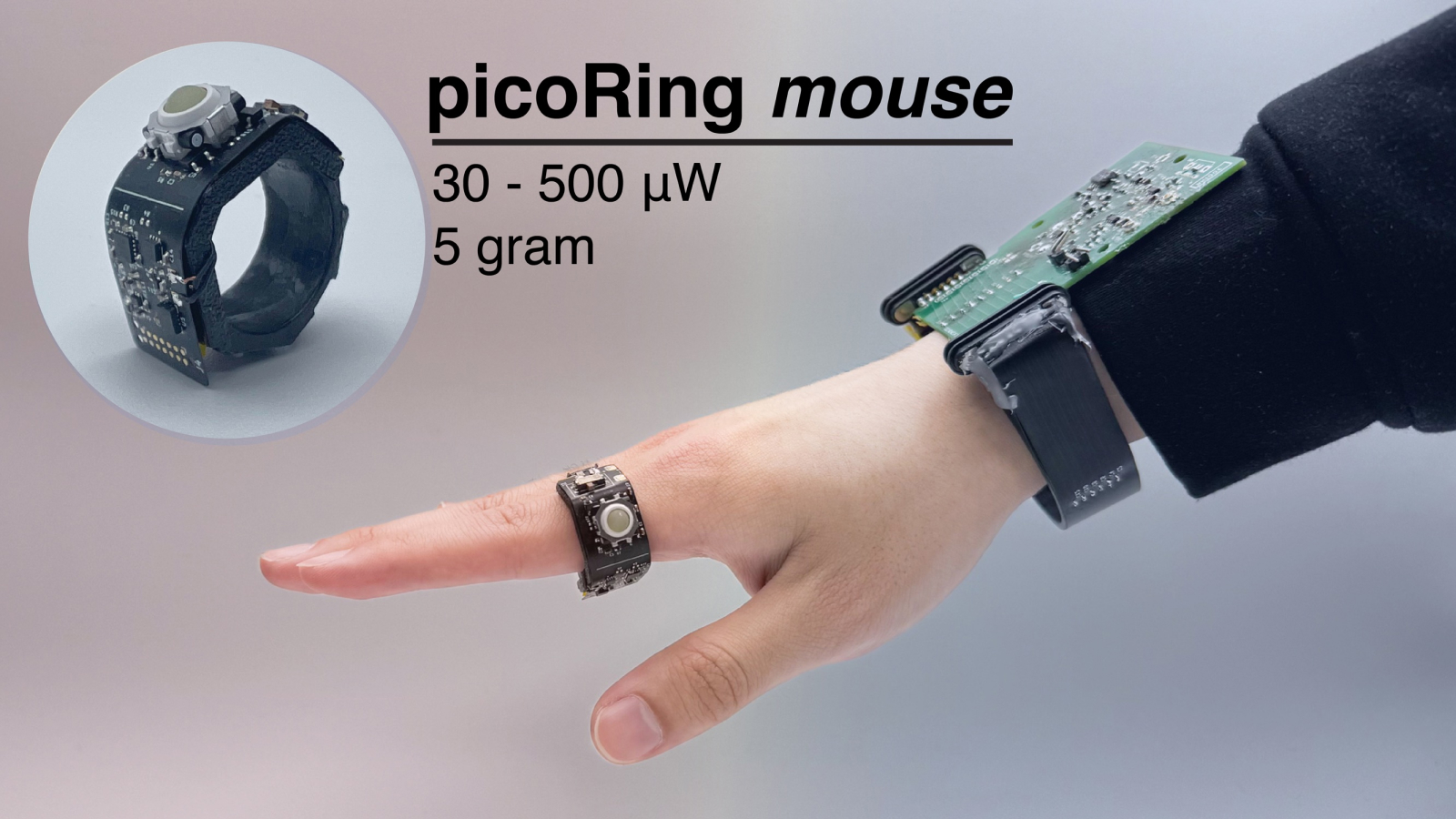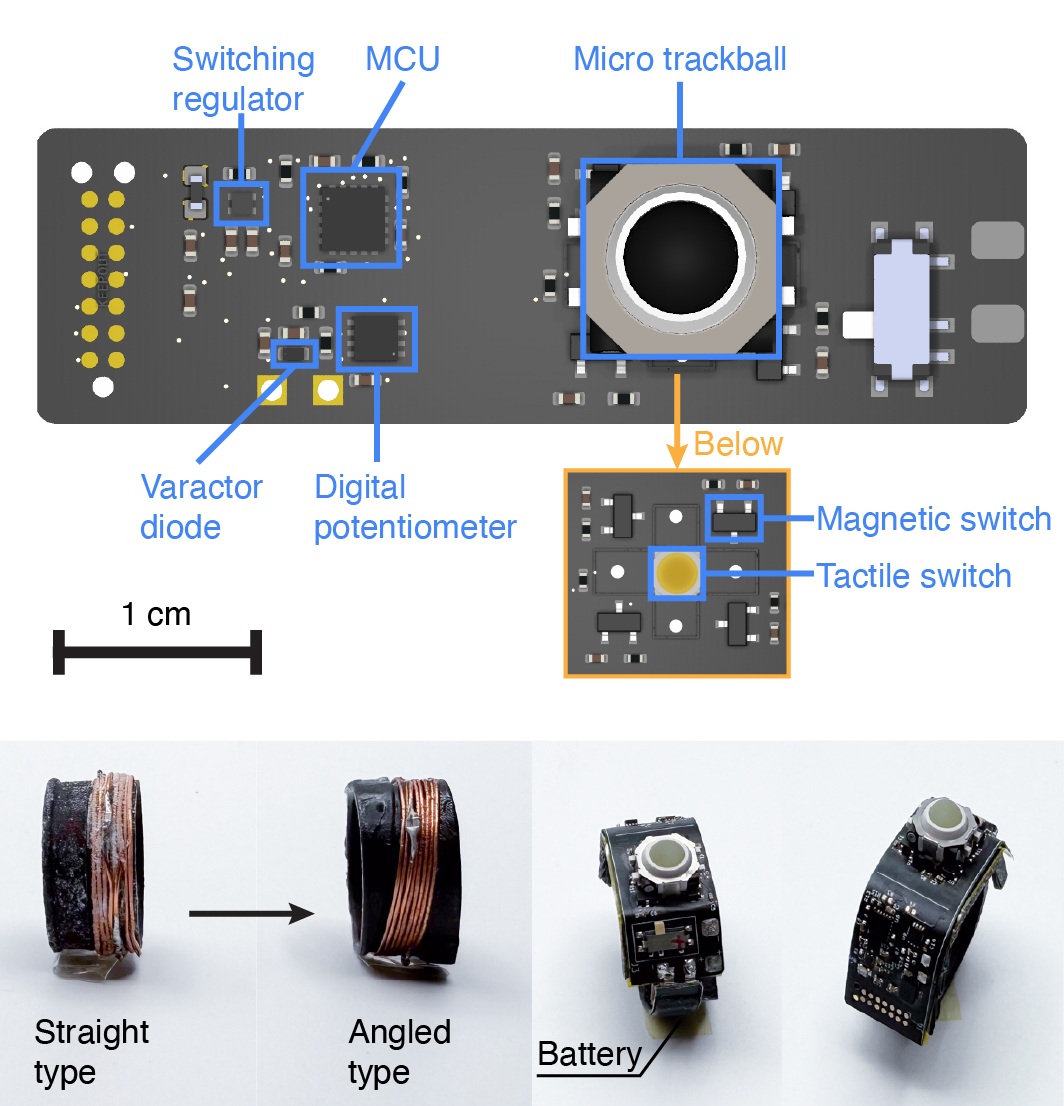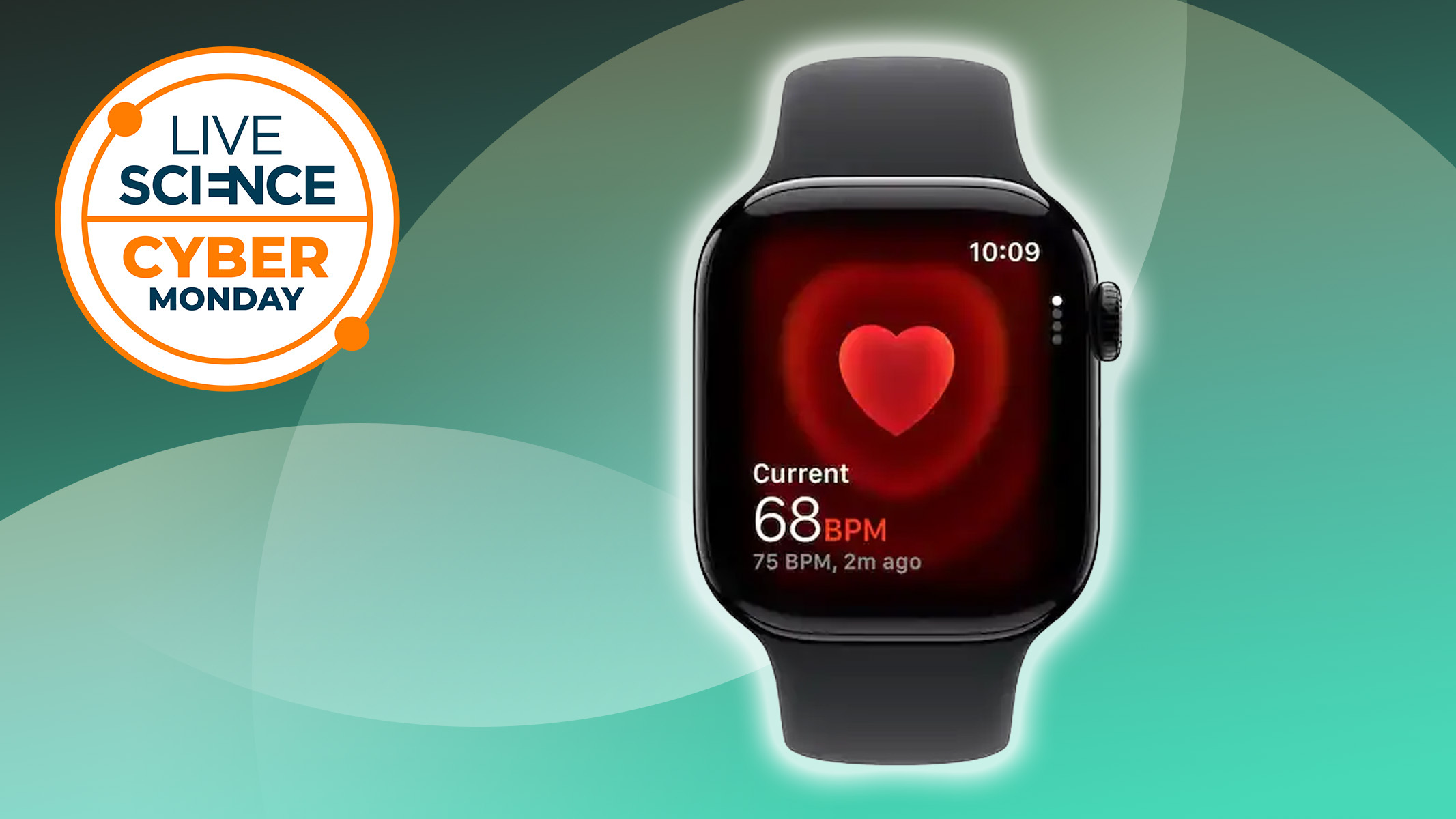New smart ring is a novel way to control your computer — it has the humble mouse firmly in its sights
The picoRing device ditches Bluetooth for a novel magnetic relay system linked to a wristband, slashing its power consumption to mere microwatts.

Researchers have developed a lightweight computer mouse that you wear on your finger like a ring and works for more than a month on a single charge.
Called picoRing, the device weighs just 0.18 ounces (5 grams) and is designed as a discreet, low-power alternative to traditional mice.
Its inventors see it initially as a contender for controlling augmented reality (AR) and virtual reality (VR) systems, where compact, hands-free control offers a practical advantage over standard input devices. Users can scroll and interact with virtual interfaces using small hand gestures, making picoRing ideal for setups that lack desk space.
Because the ring sits in direct contact with the skin, future versions could also monitor heart rate, stress levels and other health markers, the researchers said in a statement. Combining these health features with interaction control could open the door to "multifunctional wearable devices."
"Although it's just a prototype, picoRing could have several useful impacts on the way people interact with technology," Ryo Takahashi, assistant professor at the University of Tokyo's Department of Electrical Engineering and Information Systems, said in the statement.
"Obviously, it could mean longer-lasting wearable technology becomes more common, but it also offers a new intuitive way to interact with AR. It offers more discreet control to avoid being too obvious in public spaces, is generally more convenient because it’s so compact, and may become a platform for health sensors or other innovations."
The humble computer mouse has been kicking about for almost 60 years, and while its design has been refined and improved in that time, attempts to radically rethink it have never quite taken hold. Researchers hope picoRing's convenient form factor and month-long battery life will help it stand out, particularly as other ring-style wearables gain traction.
Get the world’s most fascinating discoveries delivered straight to your inbox.
"Previous so-called smart rings suffer from short lifespans because their small 50-60 megawatt-hour batteries struggle to power the necessary communications components for long," Takahashi said."To solve this challenge, we needed picoRing to use hundreds of times less power at around 30-500 microwatts."

Ring of Powerpoint?
That huge battery life is the result of a unique power system called semi-passive inductive telemetry (semi-PIT), which pairs the ring with a wristband that serves as a relay between the ring and the device it controls.
This is built around a coil of wire, similar to those found in wireless chargers, but with small capacitors running along its length. Together, these boost the magnetic fields that carry signals between the ring and wristband, extending its range without needing an external amplifier.
This enables the ring itself to use much weaker and less power-hungry components than other wireless wearables. The researchers had already ruled out standard wireless systems like Bluetooth and NFC, noting that Bluetooth would consume too much power for such a small device, while NFC only works over very short distances.
As with many prototypes, picoRing faces practical constraints in its current form. It remains somewhat bulky and can be prone to interference. For the time being, it also supports only basic inputs like scrolling and clicking.
The researchers said future refinements could make the device smaller, more responsive and easier to use in everyday settings. Still, it's unlikely ever to become the go-to for more intensive office work.
"For typical office work like spreadsheets or long editing sessions, a standard mouse is still more comfortable," said Takahashi. "But as the technology improves, it could become a lightweight alternative for mobile or occasional use."
Owen Hughes is a freelance writer and editor specializing in data and digital technologies. Previously a senior editor at ZDNET, Owen has been writing about tech for more than a decade, during which time he has covered everything from AI, cybersecurity and supercomputers to programming languages and public sector IT. Owen is particularly interested in the intersection of technology, life and work – in his previous roles at ZDNET and TechRepublic, he wrote extensively about business leadership, digital transformation and the evolving dynamics of remote work.
You must confirm your public display name before commenting
Please logout and then login again, you will then be prompted to enter your display name.

